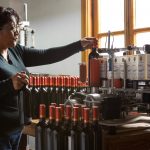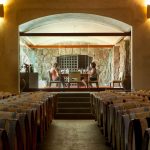Brian Pearson, owner of Upscape knows that he’s in Patagonia, he tells me, when the plane is flying in over the Balmaceda airport. Visible below is the broad Patagonian pampa he first visited when he was on a 7 month long backpacking trip with his wife, almost fifteen years ago.
“It’s here,” he says, pointing to a map, “over this valley. This is where (after landing), you start to see the mountains between Balmaceda (the only major airport in the Patagonian region of Aysén), and the coast. “And then the trees.” And anyone who’s ever been to Patagonia knows what he’s talking about. Those crazy-looking windswept trees that look like they’re craning their necks to see what’s going on, the result of twenty or fifty years of constant wind. That’s on-the-ground Patagonia.
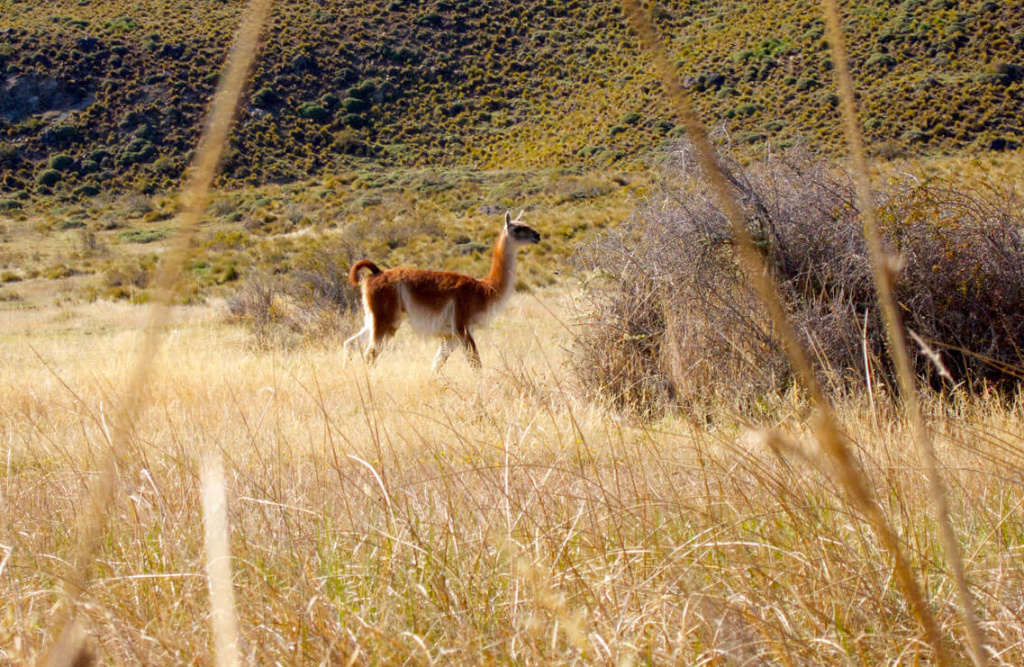 Brian doesn’t orient himself on the map in terms of cities, but on geographical features, mountains, valleys and rivers. Where ridges line up and fall away is where he finds himself, due to—or maybe as a result of—a few decades of skiing and hiking in both hemispheres. And while he wants you to appreciate the topography, he mostly wants you to see the remoteness of Patagonia, the same way he saw it when he first arrived there in 2002.
Brian doesn’t orient himself on the map in terms of cities, but on geographical features, mountains, valleys and rivers. Where ridges line up and fall away is where he finds himself, due to—or maybe as a result of—a few decades of skiing and hiking in both hemispheres. And while he wants you to appreciate the topography, he mostly wants you to see the remoteness of Patagonia, the same way he saw it when he first arrived there in 2002.
“You don’t really start to see rivers down in Aysén until the Río Simpson in Coyhaique.” He points to the map again. “Here you start seeing the lakes, and all the elements don’t really come together until a little bit further south.” He shows me a spot on the map that to the untrained eye could be anywhere on the one narrow road leading out of Coyhaique. “It’s this valley, when you’re driving down here, you get the huge rivers, the mountains, the mix of it all together, the glaciers.”
What does he most think of when he thinks of Patagonia? How wild it is. And also how stunning.
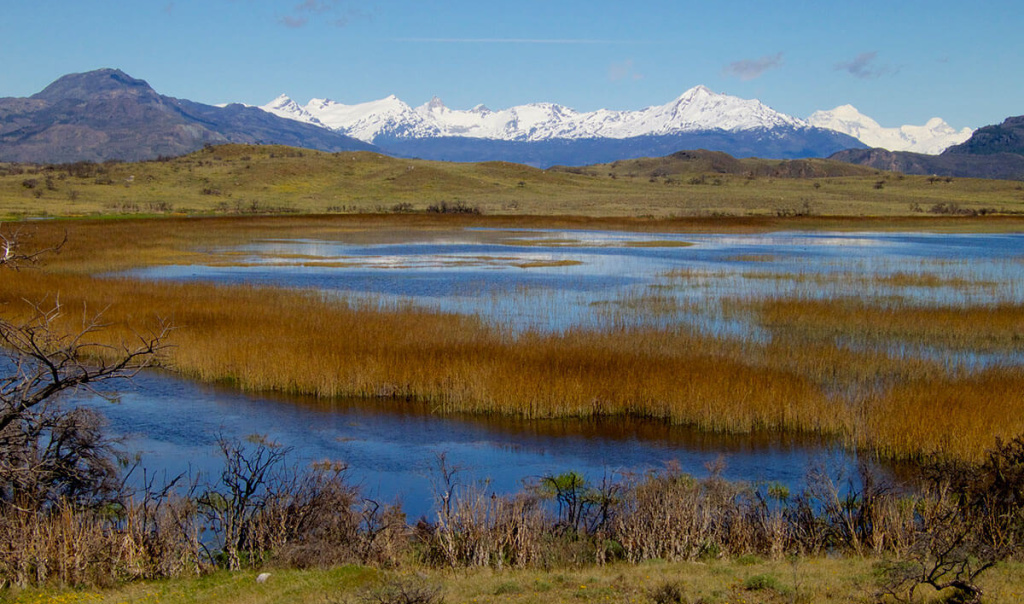
“That’s what I always tell people about Patagonia, beauty is around every corner, and it’s epic. There are waterfalls, mountains, rivers, it’s all so concentrated, and so powerful.” And one of the things that he likes the best about it, he says, is that there are barely any visitors.
Which doesn’t mean it’s unpopulated. On that first trip, he and his wife went out of their way to meet people in Cerro Castillo, a town near the granite mountain of the same name along the Carretera Austral, Chile’s southern (mostly unpaved) “highway.” They wanted to go horseback riding with some Chilean gauchos, and met them at a house that he shows me a picture of. The conditions are basic, but solid. A rectangular house with shingles made of alerce (fitzroya, Chile’s slow-growing conifer tree roughly correlate to the sequoia in North America), a corrugated tin roof, a stovepipe topped with a T to keep the downdraft out.
Brian talks about the house with tremendous respect, and extends that respect to the people live in it, and also nearby. “There’s a timelessness to it. If you like the outdoors and the roughness of survival, that’s what living in Patagonia is. People ride horses, dress the same way they did 100 years ago, carry a big knife. They’ll use the same knife to butcher a lamb and then later eat it.”
And while he usually travels in more comfort, he “find(s) that lifestyle really attractive. To be a part of it and experience the place… it’s so rough. And they live in that roughness, and know how to survive in it, and that’s still there.” He recommends visitors to Patagonia read “The Last Cowboys at the End of the World: The Story of the Gauchos of Patagonia,” by Nick Reding, which tells the story of how people live in deep Patagoina, and the threats to their way of life. He’s obliquely referring to what paved roads and other civil engineering projects have done or might do to the environment and the people who mainly subsist on it.
Talking about Patagonia, Brian says, “ It’s a place in my mind that everybody has to see if they like if they like nature. These kinds of experiences still exist in the world.” As if to demonstrate “these kinds of experiences,” he shows a picture of the crossing he and his wife did across Lago General Carrera, an impossibly turquoise lake beside the Carretera Austral in Chile’s Aysén region. On this day the lake looks like it’s been whipped into froth. We’re looking at whitecaps and and crashing waves, all caused by the wind. “It’s a blue sky and 60 mph head winds,” he says, seemingly excited at that unpredictability that Patagonia delivers. “This photo captures the remoteness, the wildness, the extreme conditions.”
And this, is what Brian wants people to see of Patagonia. “I want people to get the impression of unvisited Patagonia, to capture the thrill of what we saw fifteen years ago, but in a way that works for someone who has a short period of time and who wants to be comfortable.”
Because, he warns, just because you can book a trip to Patagonia on your own, does not mean it’s easy. “People think that because they can just book a hotel stay on the internet that it’s easy to do, that they’ll get there and there will be wifi and fresh juice,” Brian says. “Then they get there and they don’t speak the language, and there’s no transportation to where they’re trying to go, or their driver is late,” not to mention the lack of creature comforts, he explains. That’s where a trip to Patagonia can really turn rough for unprepared travelers.
Hotels and buses are only part of it. 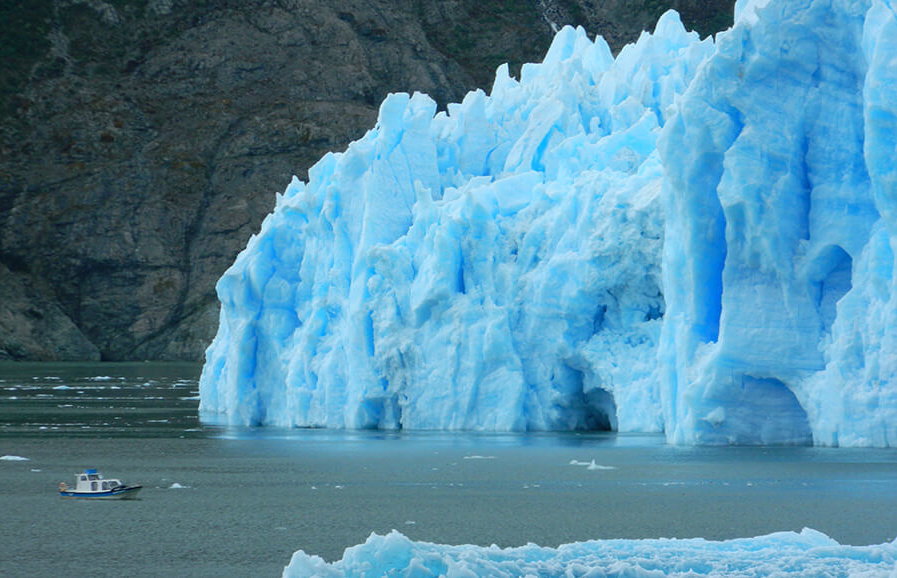 Parts of Patagonia are significantly more difficult to get to than some more mainstream South American attractions like Buenos Aires or Uruguay’s Punta del Este. In Patagonia, there can be a few different modes of transportation in a single day, for example. “It can take some time,” he says, showing a photo of a tiny boat that he and his wife spent several hours on to access the lagoon where the San Rafael Glacier is. “You don’t just fly here,” he says, “unless you’re chartering a plane.” And that’s just not for everyone he says. “I’ve talked to tour operators who tell me their clients can’t be bothered with the inconvenience of Patagonia,” by which he means drives more than a couple of hours, rough roads and boats that make lake crossings once a day, or once every couple of days.
Parts of Patagonia are significantly more difficult to get to than some more mainstream South American attractions like Buenos Aires or Uruguay’s Punta del Este. In Patagonia, there can be a few different modes of transportation in a single day, for example. “It can take some time,” he says, showing a photo of a tiny boat that he and his wife spent several hours on to access the lagoon where the San Rafael Glacier is. “You don’t just fly here,” he says, “unless you’re chartering a plane.” And that’s just not for everyone he says. “I’ve talked to tour operators who tell me their clients can’t be bothered with the inconvenience of Patagonia,” by which he means drives more than a couple of hours, rough roads and boats that make lake crossings once a day, or once every couple of days.
But after fifteen years of traveling in and around the region Brian knows all of this about Patagonia, and loves it anyway. Part of that may be because he enjoys the challenge. And another part of it is undoubtedly because the limited accessibility acts as a tourism filter, which keeps Patagonia from being overrun with visitors.
That built-in filter means that only people like him—who don’t find a little inconvenience a barrier to a great adventure, and whose hearts skip a beat when flying in across the pampa, when taking that little boat, when riding horses with Chilean gauchos—will come visit this very special part of the world.
